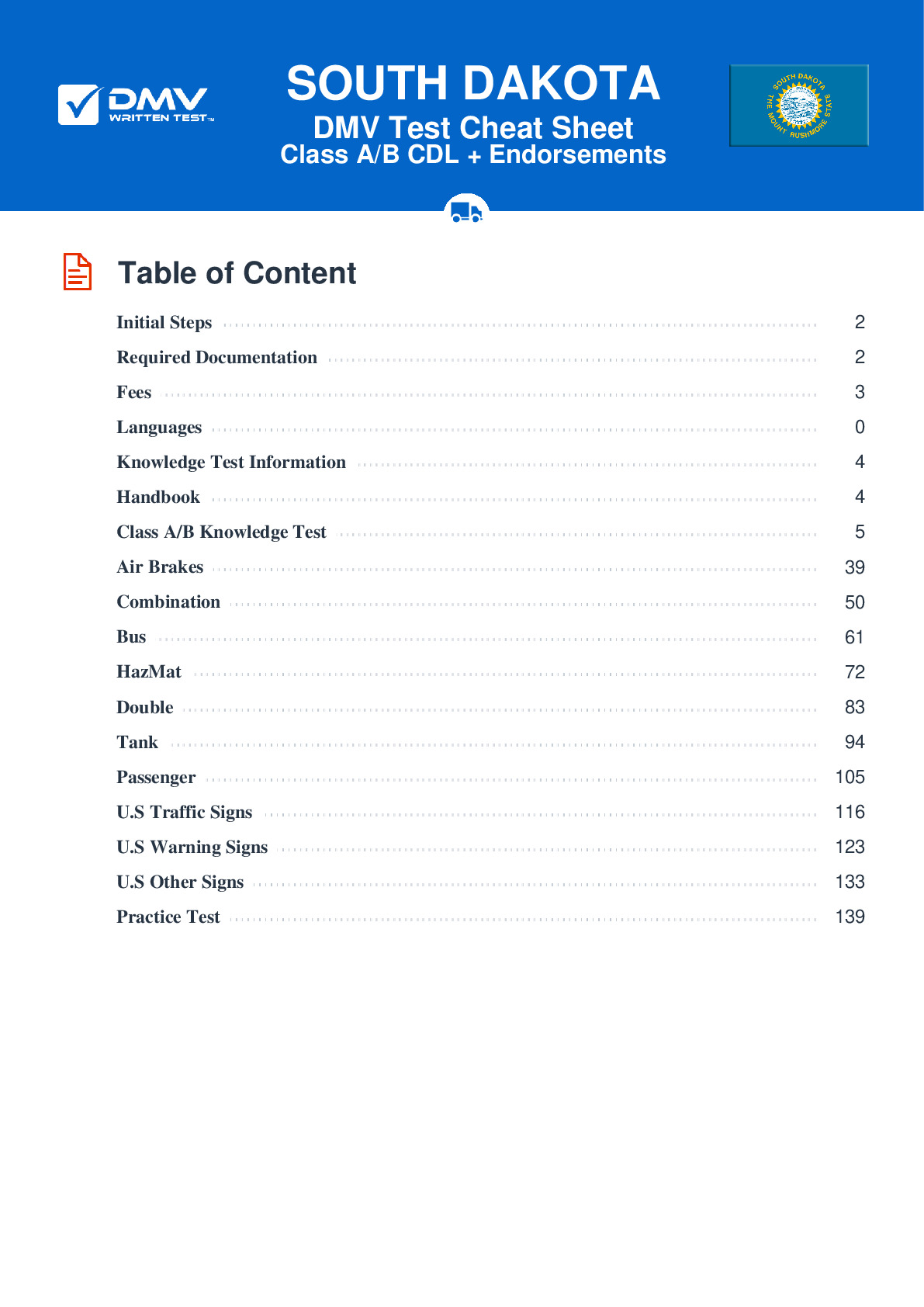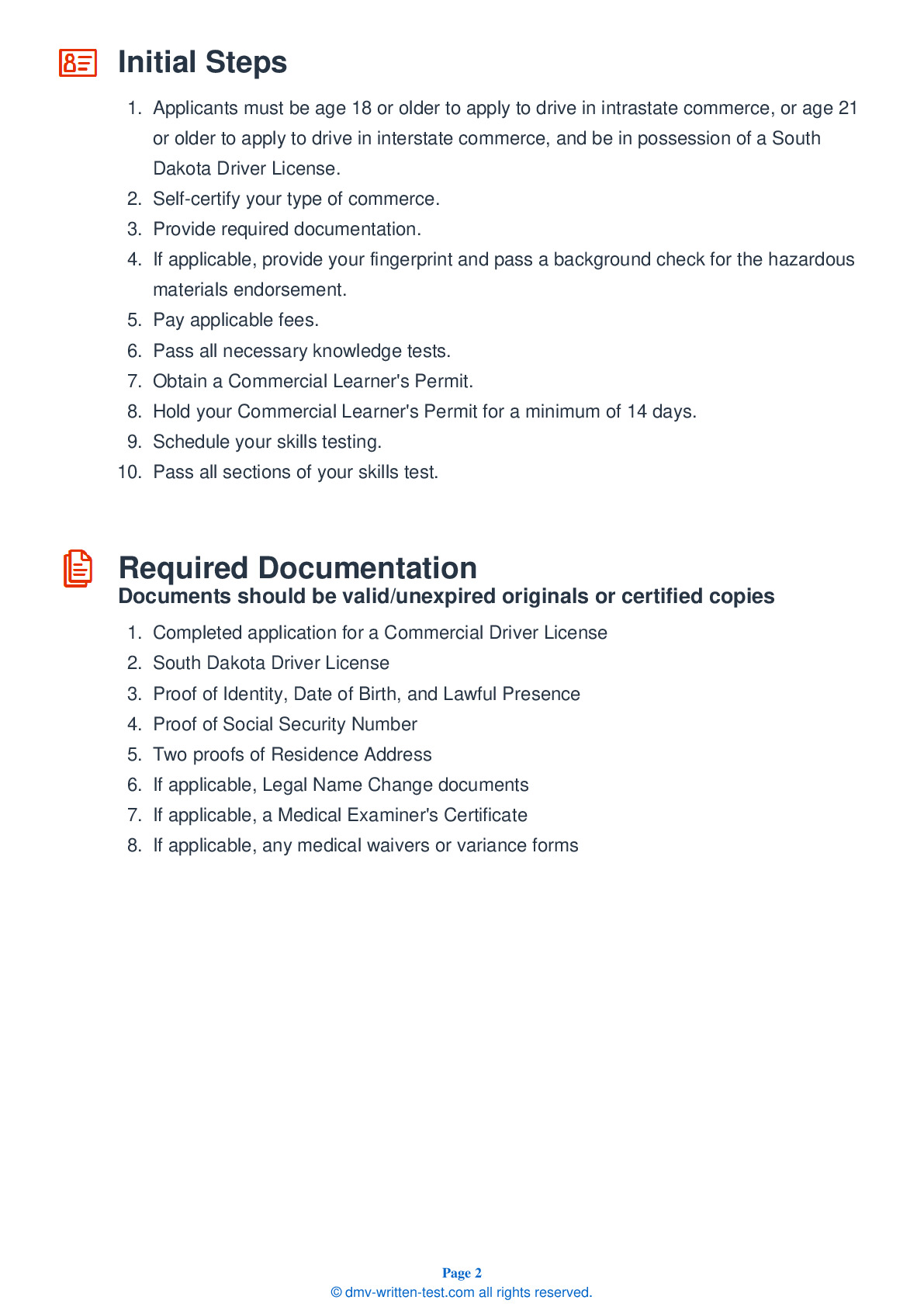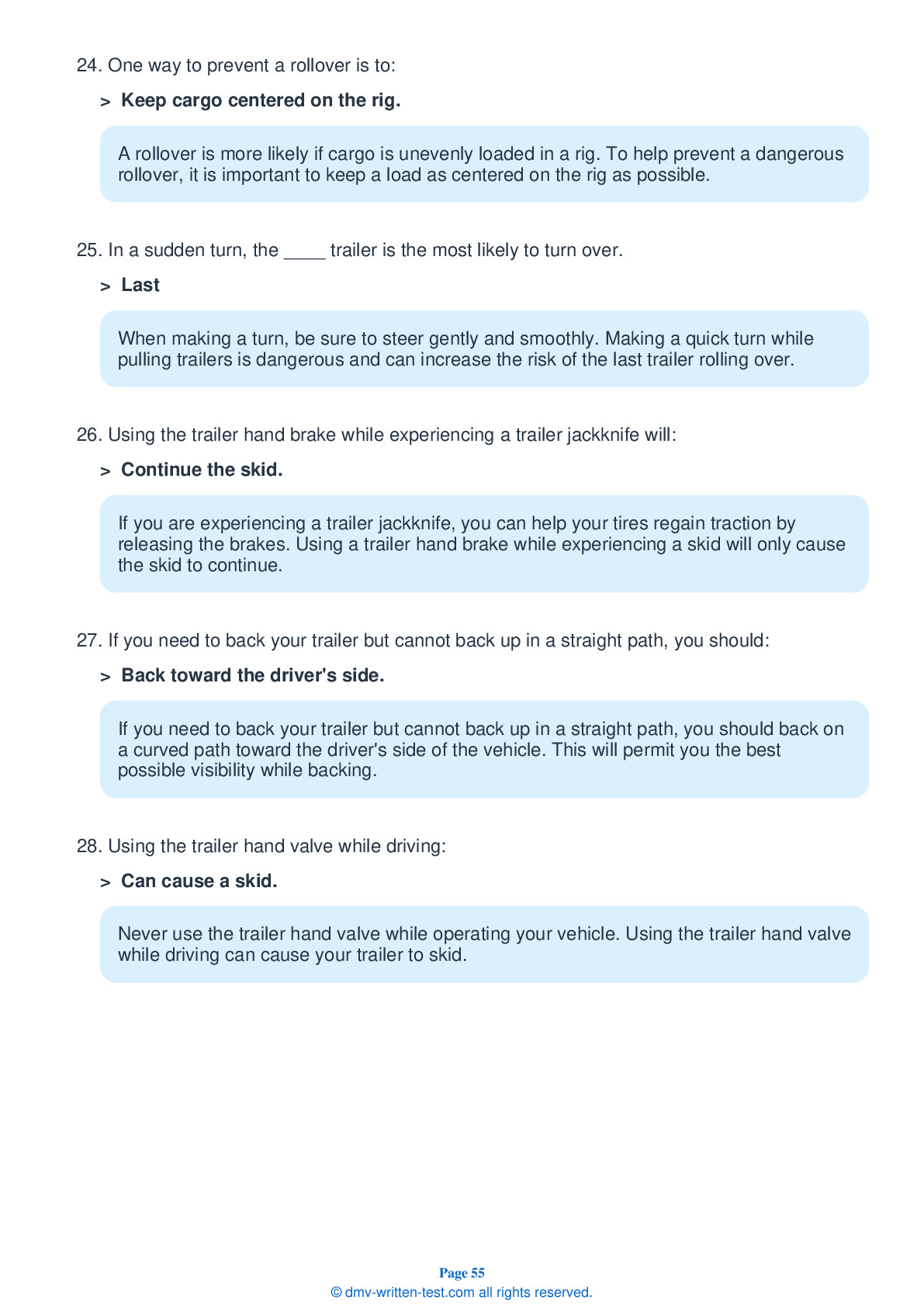Combination
All applicants who are applying for a Class A CDL should be prepared to take the Combination test. This test covers information found in Section 6 of the Commercial Driver License Manual. Section 6 provides the information needed to safely operate tractor-trailers, doubles, triples, and straight trucks with trailers. The test is made up of 20 multiple-choice questions, and applicants will need to correctly answer a minimum of 16 questions to pass. The Combination test is not a replacement for the Double/Triple endorsement test.
Number of Question
Passing Score
8. If color-coded, which color is used to identify service lines?
Explanation
Air lines are sometimes color-coded to help drivers avoid mistakes when coupling glad hands. Typically, blue is used for service lines and red is used for emergency lines.
9. When driving with trailers, you should:
Explanation
To reduce the risk of tipping over when driving with a trailer, you should steer gently and smoothly. Avoid making sudden movements.
10. Which type of vehicle is most prone to the “crack-the-whip” effect?
Explanation
Triple combination trailers are most vulnerable to the "crack-the-whip" effect.
11. Driving a combination vehicle ____ than driving a single vehicle.
Explanation
Driving a combination vehicle usually requires more skill than driving a single vehicle. Combination vehicles are generally longer and heavier than single commercial vehicles.
12. To help prevent a rollover, cargo should be:
Explanation
To reduce the risk of a rollover, the weight of cargo in a trailer should be kept as low to the ground as possible. Weight should not be placed primarily on one side of the trailer as this could make the trailer lean, increasing the risk of a rollover.
13. All trailers made after ____ must be equipped with Anti-Lock Braking Systems (ABS).
Explanation
All trailers and converter dollies manufactured on or after March 1, 1998 must have Anti-Lock Braking Systems (ABS).
14. When a combination vehicle goes around a corner:
Explanation




